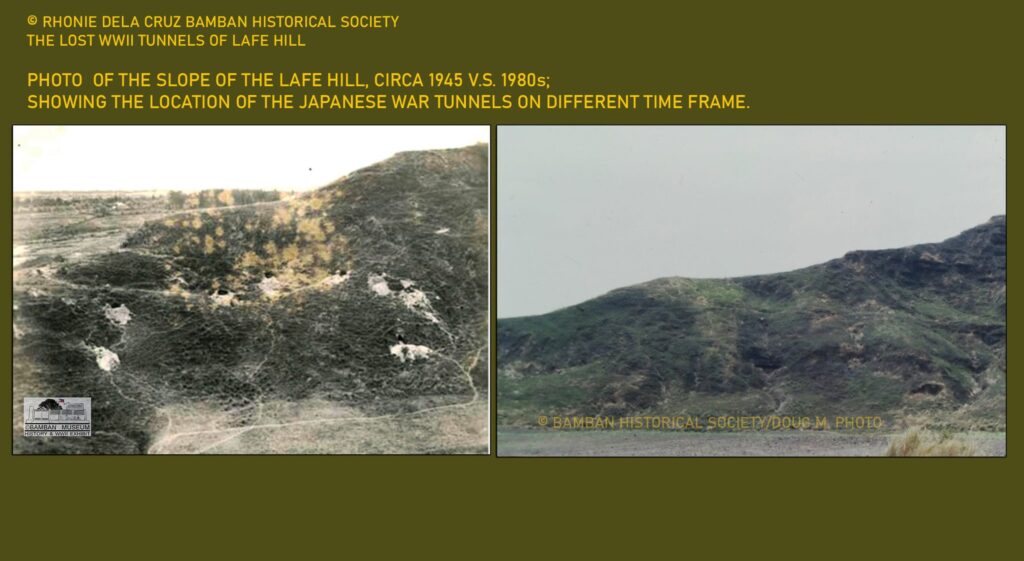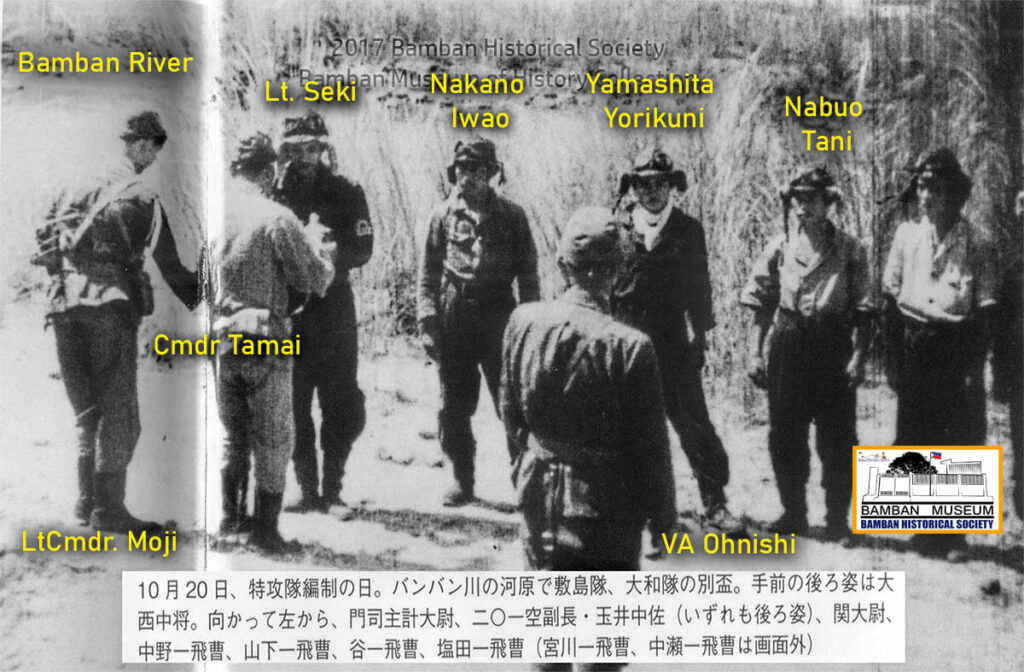
INVESTIGATING HISTORY:
THE FIRST JAPANESE SPECIAL ATTACK CEREMONY AT BAMBAN RIVERBANK, OCTOBER 20, 1944
1944年10月20日、バンバン川で行われた日本の特別攻撃隊の式典。
Being an historian, especially in the field of WWII History, I often connect the history with the places in my area in order to highlight important historical accounts. Recently, we are celebrated the Leyte Landing, where in 2019, I was one of the speakers at the 75th anniversary held in Tacloban and hosted by the National Historical Commission of the Philippines. At the same time, there were also events happened in this area that were connected to the military operations in Leyte. These events would introduce a new warfare, considered to be unorthodox or unconventional, and would impart in the history of WWII; the Kamikaze Special Attack.
THE LEYTE LANDING AND THE JAPANESE NAVY “SHO-ICHI-GO” OPERATION
レイテ作戦と捷一号作戦
It was October 19, 1944, Vice-Admiral Ohnishi hurriedly went to Mabalacat, Pampanga on a very important mission. He was about to replace Vice-Admiral Kimpei Teraoka, the commander of the 1st Air Fleet (5th Base Air Force) of the Imperial Japanese Navy in charge of the naval air operations in the Philippines. The appearance of the first American forces; the Dinagat Attack Group near Suluan in the mouth of Leyte Gulf gave the conclusion for the Japanese Combined Fleet to activate the Sho Ichi Go Operation or Sho Go Operation, the Japanese naval strategy for the defense of the Philippines against the impending American invasion that would lead to the occupation of Japan. The arrival of General MacArthur’s Allied Forces, South West Pacific command, the US Navy’s 3rd and 7th Fleet as the American invasion forces had been anticipated by the Japanese High Command, where in the Philippines, the Japanese 5th Base Air Force in charge of providing necessary air defense had only 40 operational aircraft scattered on air bases mostly at Clark and Cebu airfields. The following day, October 20 marked an important turning point in the history of WWII; General MacArthur’s famous Leyte Landing.

VICE-ADMIRAL OHNISHI’S MISSION IN MABALACAT, OCTOBER 19, 1944
1944年10月19日、マバラカットで任務に就いた大西滝次郎中将。
It was late in the afternoon on the 19th October, when the new commander of the 1st Air Fleet IJN, accompanied by his aide, Lieutenant Commander Moji Chikanori, made a sudden travel to Mabalacat, where the main fighter unit of the air fleet was located in its bases. I met Mr. Moji several times during my working days in Japan in 2000 and 2001 as part of my research studies on the perspective of the Japanese in WWII connected in the Bamban-Clark area. He was the aide-de-camp of Vice-Admiral Ohnishi, who would introduce the concept of the body-crashing tactics, in the parlance of the Japanese, the special attack. There were several manuscripts, books, photos and maps that Mr. Moji gave to me, as part of our collection for Bamban Center for Japanese WWII Studies at Bamban Museum. He wrote several books on his experience during WWII, particularly the time when he and Vice-Admiral Ohnishi moved to Bamban Naval HQ.
Citing his war memoirs, he published, Ohnishi’s Reminiscences, this book was written by the very person who accompanied the Father of Kamikaze in most of the critical time in the air war in the Philippines in late 1944 until January 10, 1945. From Manila, he drove the perilous roads north, where Filipino guerrillas sometimes ambush Japanese convoy and military vehicles, especially this sedan that Mr. Moji was driving, with no other than the commander of the Japanese navy air force was the passenger. They arrived at the headquarters of the Air Group 201, established at Mr. Marcos Santos house located near the road at the poblacion. It was a western style house with red tiled roof, surrounded by small fence. There were several nipa huts behind the Santos house, where they were used as billets for the pilots of Air Group 201. He was met by Lieutenant Ibusuki, squadron leader of the 201st who was sick. The two left the headquarters and proceeded north where the fields used to be sugar cane plantations, at the Mabalacat East Airfield located in the barrio of Cacutud. This airfield was built by the Japanese out of the wide expanse of the sugar cane fields. There was a small tent located on the side of the airfield and the two disembarked to meet Captain Rikihei Inoguchi (former commander of Air Group 153, then air operations officer of 1st Air Fleet), and Commander Tamai (Air Group 201), along with squadron leader Lieutenant Ibusuki who followed the two. Captain Yamamoto, the commander of the air group was in Manila, wounded with a broken leg when his plane crash-landed after taking-off for Clark Airfield.
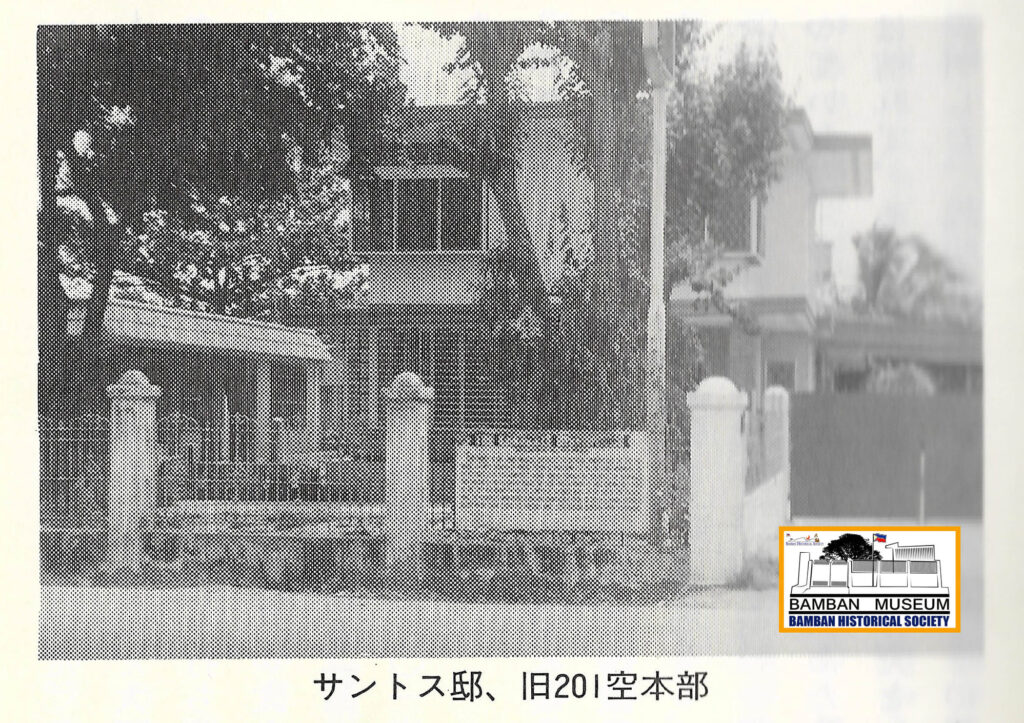
THE BIRTH OF KAMIKAZE SPECIAL ATTACK FORCES
神風特別攻撃隊の誕生。
After several friendly discussions with Commander Tamai, the group decided to go back to the headquarters at Mr. Santos house. The house was used as headquarters by the 26th Air Flotilla commanded by Rear-Admiral Ushie Sugimoto, and moved to some buildings inside the Clark Airfield. Vice-Admiral Ohnishi requested Chiuchi Yoshioka, staff officer of the 26th Air Flotilla, to accompany them to the headquarters for some important meeting. On the evening of October 19, what transpired in the secret meeting between Captain Inoguchi, Commander Tamai, Staff officer Yoshioka, Lieutenants Ibusuki and Yokoyama (another squadron leader of 201st) was Vice-Admiral Ohnishi’s introduction of the special attack strategy:
“In my opinion, there is only one way of assuring that our meager strength will be effective to a maximum degree. That is to organize suicide attack units composed of Zero fighters armed with 250-kg bombs, with each plane to crash-dive into an enemy carrier.”
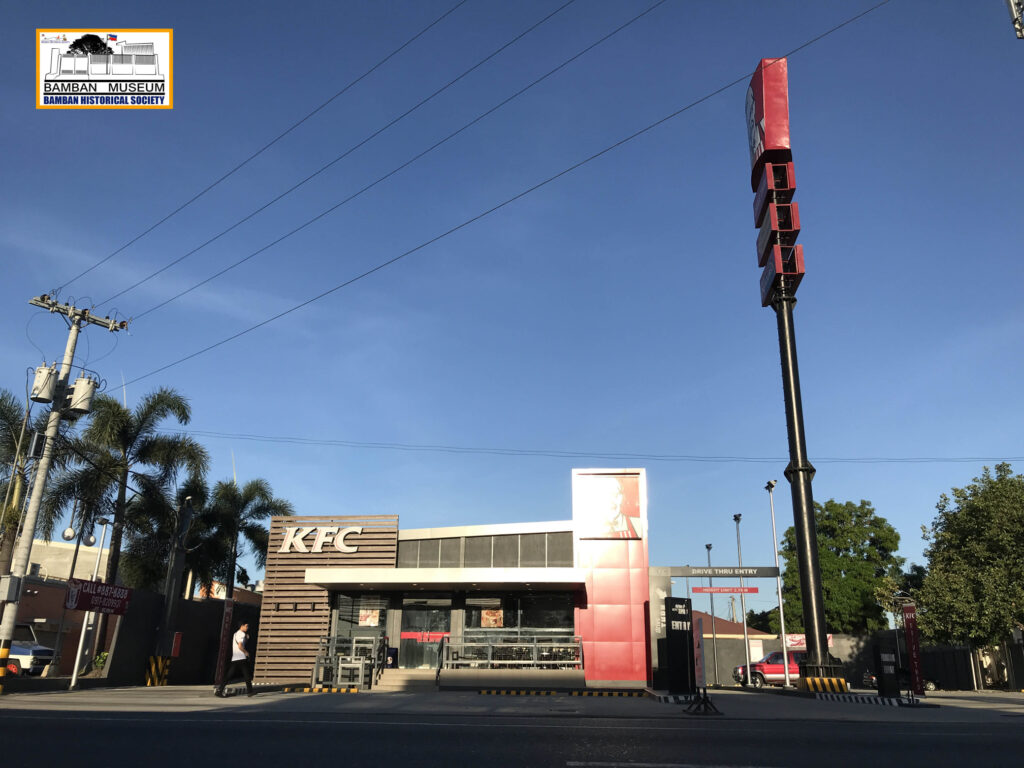
10TH YOKAREN FLIGHT PREPARATORY COURSE TRAINEES
第10期予科練飛行予科訓練生。
Commander Tamai got the views of his squadron leaders and was given the task of organizing the pilots for the crash-diving unit. 23 non-commissioned pilots of the Air Group 201 assembled with Commander Tamai, after conferring with Lieutenants Ibusuki and Yokoyama and presented to them what had been discussed with Vice-Admiral Ohnishi’s crash-diving tactics, in which they all agreed. All of the pilot, with the exception of Lt. Yukio Seki, graduated from the 10th Yokaren Flight Preparatory course (10th Yokaren). Lieutenant Yukio Seki was chosen by Commander Tamai to lead the first Kamikaze Special Attack unit, the term Shimpu (another term for Kamikaze) was given by Captain Inoguchi.
The Shimpu Attack Unit was comprised of the 4 sections; the Shikishima, Yamato, Asahi, and Yamazakura. There was original 13 pilots for the Kamikaze, and another 10 pilots tasked for escort mission; for a total of 23 pilots. Most of the pilots were just 20 years old and below, while Lieutenant Seki was 23 years and graduated from the Naval Academy. On the morning of the 21st October, at 10 a.m., the pilots of the First Kamikaze Shimpu Tokubetsu Kogekitai (1st Kamikaze Special Attack Corps) gathered in the garden in front yard of the Santos House, with 1 additional pilot, making a total of 24 pilots including escorts. Recent available information gathered Naoki Koudachi, a Japanese WWII aviation historian on the number of Kamikaze pilots gathered on the garden of the Santos House indicated that there were more naval pilots during the event, at 33.
Most of the Japanese navy pilots became members of the 4 sections of the Shimpu Attack Force. Those who were not transferred to the Shikishima, Yamato, Asahi, and Yamazakura units, a new section was organized; the KIKUSUI UNIT. This creation of Kikusui was based on the diary of Captain Sakae Yamamoto, former commander of the Air Group 201.


THE FIRST SPECIAL ATTACK CEREMONY
第一回特別攻撃儀式
With the organization of the special attack already in motion, the pilots led by Lieutenant Seki where already on standby at Mabalacat West Airfield, awaiting further instructions as the Japanese scouting planes were searching for the American fleets in the Central Philippines on the day. It was cloudy and Vice-Admiral Ohnishi, at 3 p.m., was at the headquarters and waiting the development when he requested to meet the pilots of the Shikishima Unit before heading back to Manila. Commander Tamai accompanied Vice-Admiral Ohnishi and Lieutenant Commander Moji, arriving on the southern end of the Mabalacat West, then embarking down the cliff to the Bamban riverbed, where a tent was used as billet of the pilots. There were 7 navy pilots waiting at the tent near the riverbank; 5 from the Shikishima Unit and 2 from Yamato Unit led by Lieutenant Seki. Standing in formation with the gushing waters of the Bamban river flowing in their back, Vice-Admiral Ohnishi, Commander Tamai, and Lieutenant Commander Moji were with the 7 pilots, having conversation for about 20-30 minutes.
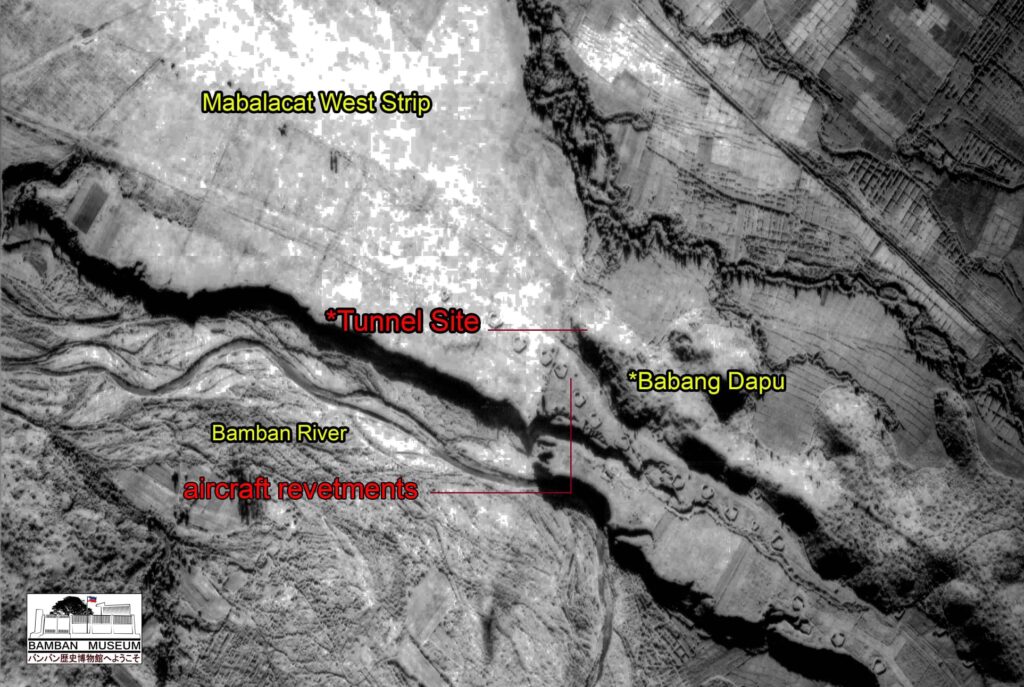
THE WATER PURIFICATION AT THE BAMBAN DRY RIVERBED
バンバンの川底での水の浄化。
Before leaving for Manila, Vice-Admiral Ohnishi, in the fading sun setting on the Bamban Mountains to the west, faced the pilots, with Lieutenant Seki on the left and all standing upright, to perform the first water purification ceremony for the Kamikaze pilots. Later photographs and video clips show of the ceremony for the departing Kamikaze pilots with Japanese Sake wine, but the first ceremony of the Shikishima Unit with Vice-Admiral Ohnishi was the original Japanese tradition of Water Purification Ceremony to cleanse the body and mind especially in the shrine. At the time, Mr. Inagaki, a war correspondent, was at the site, taking photographs and recording the scene in camera. Vice-Admiral Ohnishi asked Lieutenant Commander Moji of his water canteen, then passed to Captain Inoguchi and Commander Tamai; Tamai handed the canteen to Lieutenant Seki, from which all the 6 pilots standing drunk. During the ceremony, it was observed by the photographer and cameraman Mr. Inagaki that Commander Tamai had tears in his eyes and that his hands were shaking while delivering the water canteen to each pilot. The scenery of the first water purification conducted by the official Kamikaze special attack unit was captured in photographs and video clip by Mr. Inagaki, and became one of the iconic photographs of the war in the Pacific by the Japanese.
From the left to right:
Special Attack Pilots at Bamban Riverbed, October 20, 1944:
1944年10月20日、バンバン川床の特攻隊員たち。
-Lieutenant Commander Moji (aide of Vice-Admiral Ohnishi): Staff Officer, 5th Base Air Force
-Yukio Seki: Lieutenant, Air Group 201, Shikishima Unit (CO, Shimpu Tokubetsu Kegikitai)
-Commander Asaichi Tamai (back): Executive Officer, Air Group 201
-Iwao Nakano: Aviation Petty Officer 1st Class PO1C, 301 Squadron, Shikishima Unit
– Vice Admiral Onishi (back): Commander, 5th Base Air Force
-Noriyuki Yamashita: Aviation Petty Officer 1st Class PO1C, 301 Squadron, Shikishima Unit
-Nobuo Tani, Aviation Petty Officer 1st Class PO1C, 305 Squadron, Shikishima Unit
– Hiroshi Shioda: Aviation Petty Officer 1st Class PO1C, 306 Squadron, Shikishima Unit
-Tadashi Miyakawa (partially in view): Aviation Petty Officer 1st Class PO1C, 301 Squadron, Yamato Unit
-Kiyohisa Nakase (not shown): Aviation Petty Officer 1st Class PO1C, 306 Squadron, Yamato Unit
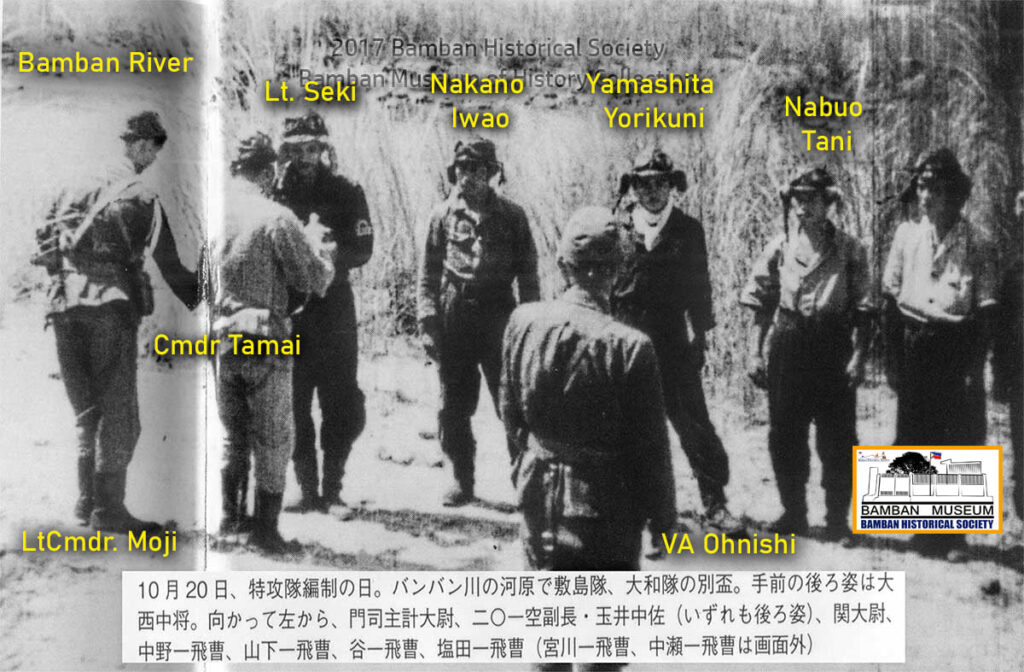
It was already 4 p.m., knowing the danger of traveling in the evening that would be the perfect opportunity for the Filipino guerrillas to conduct ambush, Vice-Admiral Ohnishi saluted the pilots of the Shikishima Unit. He excused himself and bade goodbye to the pilots, went back first to the Mabalacat headquarters, and later headed for the Manila headquarters of the 1st Air Fleet located in Nichols Field for a two-hour ride with his aide.

From Mabalacat, the official crash-diving special attack was organized by Vice-Admiral Ohnishi, and the tactics would be employed by the Imperial Japanese Navy and later the Army air forces and spread from the Philippines to Japan empire. The war would never be the same again, after the events on the evening of October 19 and the first Kamikaze purification ceremony on the following day. Most of the original members of the First Shimpu Special Attack Force perished in the Kamikaze mission, impacting on the tactics and psychology on how the naval battle was employed, but never changed the outcome of the war.
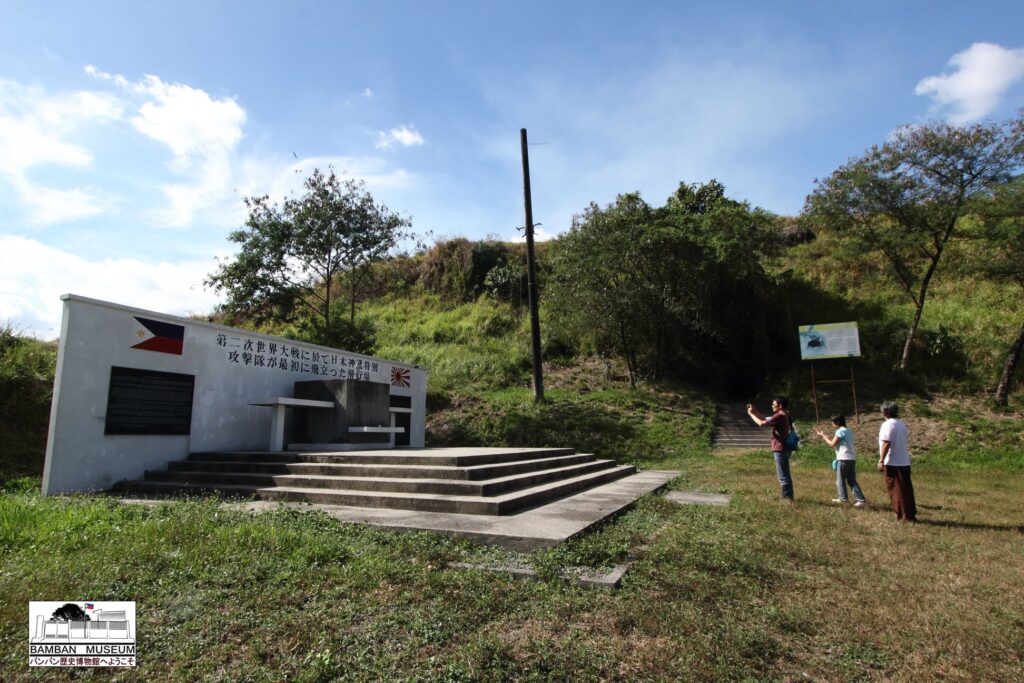
In 2000, I was able to meet former Lieutenant Commander Moji Chikanori during my stint in Japan and had the opportunity to visit him on a monthly basis in his home in Oiso, near Tokyo, Japan. My inquisitive attitude led me to become his friend, and precious moments were shared where I was able to get new insights on WWII History in my area.
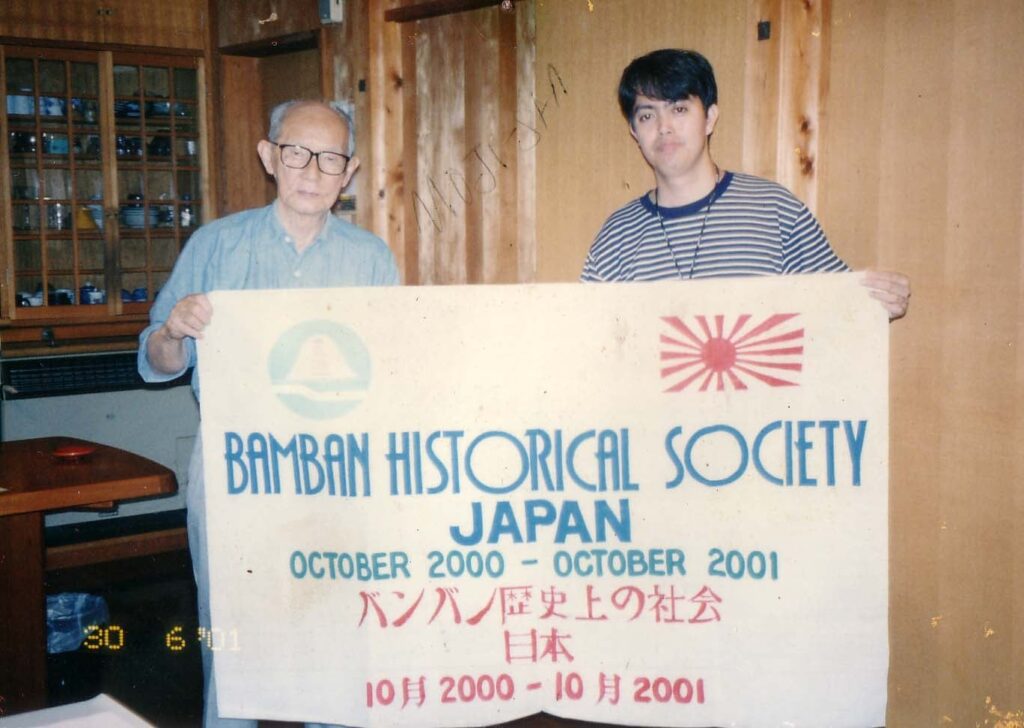
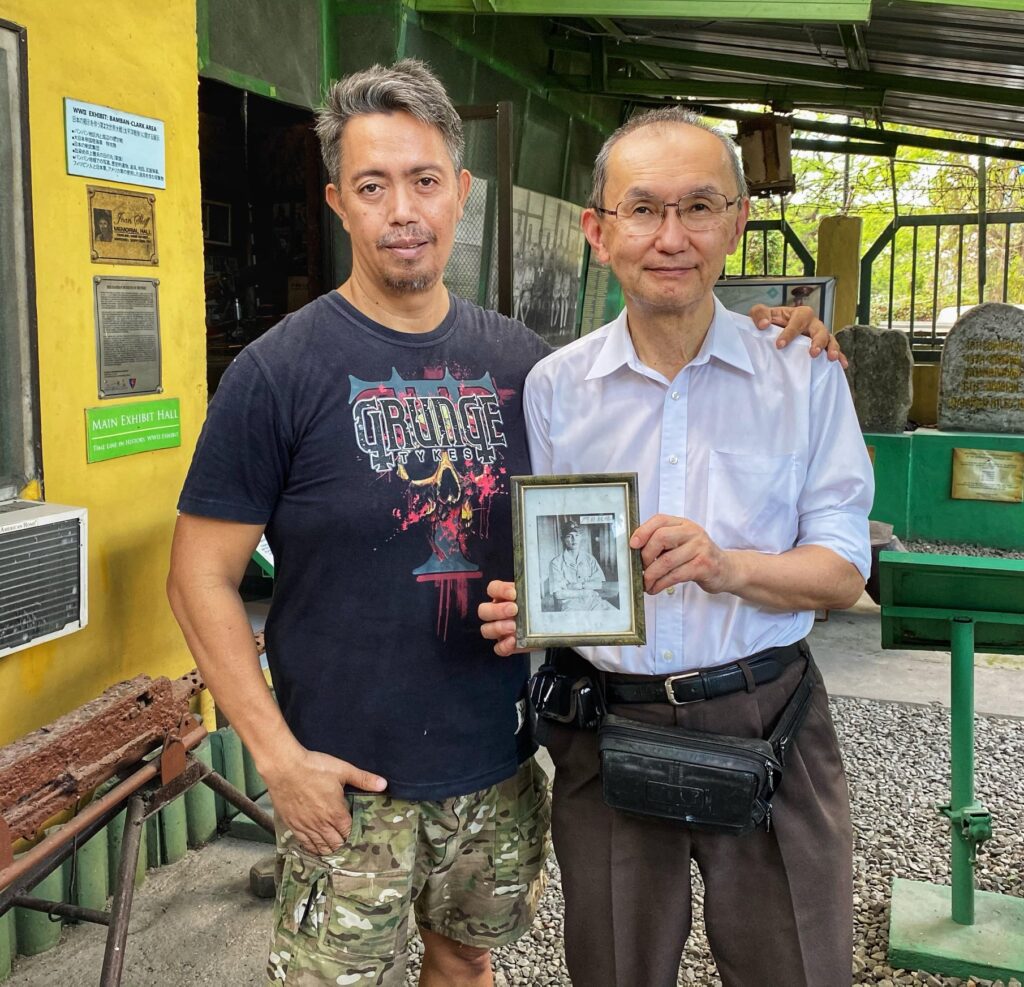
Rhonie Dela Cruz
Bamban Historical Society
Bamban WWII Museum
Center for Japanese WWII Studies
CITATION:
(1) Chikanori, Moji. At the Far End Between the Sky and the Sea – Reminiscences of the First Air Fleet Adjutant, translated by Jin Arai and Takaoki Fusejima.
(2) Toshio, Kaneko. True Records of the Kamikazes. translated by Jin Arai and Takaoki Fusejima.
(3) Inoguchi, Nakajima and Pineau. The Divine Wind – Japan’s Kamikaze Force in WWII.
(4) Naoki Koudachi, Reminiscences of Admiral Ohnishi.
(5) Diary of Captain Sakae Yamamoto, 201st Kokutai Commander.
(6) Dela Cruz, Rhonie. From Clark Field to Leyte: Connecting the Events and The Role of The Clark Air Center in Leyte Operations In 1944. NHCP Journal in Local History and Heritage Volume 7 No. 1.
PHOTOS:
(a) The first Shimpu Kamikaze ceremony held on the riverbed of the Bamban on October 20, 1944 between 3-4 p.m.
Photo provided by the late Moji Chikanori, Bamban Historical Society Collection.
(b) Vice-Admiral Ohnishi and his aide, Lt. Comdr. Moji Chikanori, taken after their escape from Bamban Naval HQ in 1945.
Photo provided by the late Moji Chikanori, Bamban Historical Society Collection.
(c) The Santos House, taken in 1970s with the marker in front. The house was the HQ of 26th Air Flotilla, later the Air Group 201 where Vice-Admiral Ohnishi stayed on October 19 and 20th 1944 and founded the first Kamikaze special attack corps.
Kaneko Toshio Photo, , Bamban Historical Society Collection.
(d) KFC Mabalacat, the site of the former Marcos Santos House that was used as the HQ of Air Group 201 where the Kamikaze special attack corps was founded by Vice-Admiral Ohnishi in October 1944.
Rhonie Dela Cruz Photo.
(e) Commander Tamai, Air Group 201, who was given the tasked to organized the pilots of Air Group 201 on the evening of October 19, 1944 to become the first Kamikaze Special Attack Corps.
Kaneko Toshio Photo, , Bamban Historical Society Collection.
(f) Photo of Lieutenant Yukio Seki, commanding the Shimpu Special Attack Corps and Shikishima Unit, most probably taken at Mabalacat East Airfield in October 1944.
Kaneko Toshio Photo, , Bamban Historical Society Collection.
(g) Aerial view of the edge of the Mabalacat West Airfield, on the cliff and down below the Bamban River can be observed, where the pilots of the Air Group 201 stay in a tent prior sorties for Kamikaze mission.
National Archives NARA photo.
(h) Pilots from the Air Group 201 stationed at Mabalacat airfields in 1944.
Kaneko Toshio Photo, , Bamban Historical Society Collection.
(i) With the late Moji Chikanori, former aide of Vice-Admiral Ohnishi during my stay in Japan on research works.
Bamban Historical Society photo.
(j) Edge of the Mabalacat West Airfield, where a memorial is established. The water purification ceremony held on the riverbanks of the Bamban is near this site.
Bamban Historical Society photo.
(k) Kazuhiko Moji, son of the late Moji Chikanori, during his visit at Bamban Museum.
Bamban Historical Society photo.-

